Related Research Articles

The Kickapoo people are an Algonquian-speaking Native American and Indigenous Mexican tribe, originating in the region south of the Great Lakes. Today, three federally recognized Kickapoo tribes are in the United States: the Kickapoo Tribe in Kansas, the Kickapoo Tribe of Oklahoma, and the Kickapoo Traditional Tribe of Texas. The Oklahoma and Texas bands are politically associated with each other. The Kickapoo in Kansas came from a relocation from southern Missouri in 1832 as a land exchange from their reserve there. Around 3,000 people are enrolled tribal members.

The American Indian Movement (AIM) is a Native American grassroots movement which was founded in Minneapolis, Minnesota in July 1968, initially centered in urban areas in order to address systemic issues of poverty, discrimination, and police brutality against Native Americans. AIM soon widened its focus from urban issues to many Indigenous Tribal issues that Native American groups have faced due to settler colonialism in the Americas. These issues have included treaty rights, high rates of unemployment, Native American education, cultural continuity, and the preservation of Indigenous cultures.
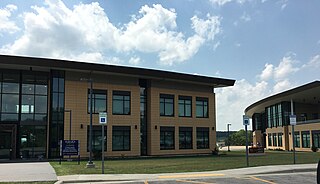
The Osage Nation is a Midwestern Native American tribe of the Great Plains. The tribe developed in the Ohio and Mississippi river valleys around 700 BC along with other groups of its language family. They migrated west after the 17th century, settling near the confluence of the Missouri and Mississippi rivers, as a result of Iroquois invading the Ohio Valley in a search for new hunting grounds.
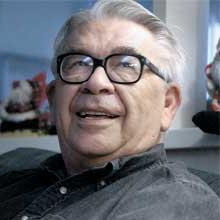
Vine Victor Deloria Jr. was an author, theologian, historian, and activist for Native American rights. He was widely known for his book Custer Died for Your Sins: An Indian Manifesto (1969), which helped attract national attention to Native American issues in the same year as the Alcatraz-Red Power Movement. From 1964 to 1967, he served as executive director of the National Congress of American Indians, increasing tribal membership from 19 to 156. Beginning in 1977, he was a board member of the National Museum of the American Indian, which now has buildings in both New York City and in Washington, DC, on the Mall.

Bacone College, formerly Bacone Indian University, is a private tribal college in Muskogee, Oklahoma. Founded in 1880 as the Indian University by missionary Almon C. Bacone, it was originally affiliated with the mission arm of what is now American Baptist Churches USA. Renamed as Bacone College in the early 20th century, it is the oldest continuously operated institution of higher education in Oklahoma. The liberal arts college has had strong historic ties to several tribal nations, including the Muscogee and Cherokee. The Bacone College Historic District has been on the National Register of Historic Places listings in Muskogee County, Oklahoma since 2014.
Adam Fortunate Eagle L.H.D., hereditary member of the Red Lake Band of Chippewa Indians, is a Native American activist and was the principal organizer of the 1969–1971 Occupation of Alcatraz by "Indians of All Tribes".

The Red Power movement was a social movement led by Native American youth to demand self-determination for Native Americans in the United States. Organizations that were part of Red Power Movement included American Indian Movement (AIM) and National Indian Youth Council (NIYC). This movement sought the rights for Native Americans to make policies and programs for themselves while maintaining and controlling their own land and resources. The Red Power movement took a confrontational and civil disobedience approach to inciting change in United States to Native American affairs compared to using negotiations and settlements, which national Native American groups such as National Congress of American Indians had before. Red Power centered around mass action, militant action, and unified action.

The Occupation of Alcatraz was a 19-month long protest when 89 Native Americans and their supporters occupied Alcatraz Island. The protest was led by Richard Oakes, LaNada Means, and others, while John Trudell served as spokesman. The group lived on the island together until the protest was forcibly ended by the U.S. government.
Pan-Indianism is a philosophical and political approach promoting unity, and to some extent cultural homogenization, among different Indigenous groups in the Americas regardless of tribal distinctions and cultural differences.
Edward D. Castillo, of the Luiseño-Cahuilla tribes, is a Native American activist who participated in the American Indian occupation of Alcatraz in 1969. Former professor and director of Native American Studies at the Sonoma State University in California, he wrote several chapters in the Smithsonian Institution's Handbook of North American Indians and in Mission Indian Federation: Protecting Tribal Sovereignty 1919-1967, published in the Encyclopedia of Native Americans in the 20th Century. He is editor of Native American Perspectives on the Hispanic Colonization of Alta California and The Pomo, A Tribal History. Castillo was a regular contributor of book reviews to historical journals such as Indian Historian, Journal of California Anthropology, Western Historical Quarterly, American Indian Quarterly and California History.

Agents of Repression: The FBI's Secret Wars Against the Black Panther Party and the American Indian Movement is a book by Americans Ward Churchill and Jim Vander Wall, first published in 1988. It describes government campaigns to disrupt the legal political activities of the Black Panther Party and the American Indian Movement, especially through actions of the FBI.
This study gives a chilling account of the government attack against the American Indian Movement and the Black Panther Party, placed in the context of the traditional use of the FBI for domestic political repression. It is a powerful indictment, with far–reaching implications concerning the treatment of political activists, especially those that are Black or Native American, and the functioning of our political institutions generally.

The Great Sioux Nation: Sitting in Judgment on America is a book edited by Roxanne Dunbar-Ortiz, "An Oral History of the Sioux Nation and Its Struggle for Sovereignty", that documents the 1974 "Lincoln Treaty Hearing". Testimony produced during that hearing has been cited by the International Indian Treaty Council in advocating for Indigenous sovereignty and treaty rights, efforts which eventually saw the 2007 Declaration on the Rights of Indigenous Peoples.

Paul Chaat Smith (Comanche) is an author and an associate curator at the National Museum of the American Indian. He writes and lectures frequently on American Indian art and politics.
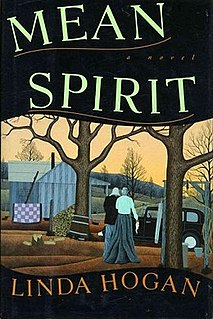
Mean Spirit is a book about the Osage tribe during the Oklahoma oil boom. It is the first novel by Chickasaw author Linda Hogan. It was nominated for the Pulitzer Prize for Fiction in 1991.
Viola Hatch was a Native American activist, founding member of the National Indian Youth Council, and former Tribal Chair of the Cheyenne and Arapaho Tribes. She successfully sued the Canton, Oklahoma schools regarding the right of students to obtain an education.
Dr. Linda Susan Aranaydo is a Native American physician, educator, and activist. Aranaya recognized the impact that health care inaccessibility had on her community and decided to steer her career toward involvement in public health and family medicine. Among other honors, Aranaydo is the recipient of the 1995 David Vanderryn Award for Outstanding Community Service as a Family Physician.
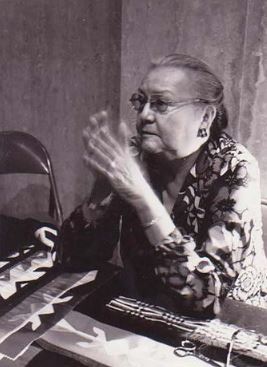
Georgeann Robinson was an Osage teacher and businesswoman, who used her skill with ribbonwork to preserve the cultural heritage of her people. She was honored as a 1982 National Heritage Fellowship recipient by the National Endowment for the Arts and has works in the permanent collections of the Metropolitan Museum of Art in Manhattan, Museum of International Folk Art of Santa Fe, New Mexico and in the Southern Plains Indian Museum in Anadarko, Oklahoma. As an activist, from 1958, she was active in the National Congress of American Indians and in the late 1960s, was the executive vice president of the organization.

The Osage Battalion was a Native American unit of the Confederate States Army. Recruited from among the Osage tribe, whose loyalties were split between the Union and Confederacy, it did not meet its 500-man establishment. From early 1863 a four-company battalion of 200 men served under Brigadier General Douglas H. Cooper in the Trans-Mississippi Department. In 1864 the unit was transferred to the First Indian Brigade under Native American Brigadier General Stand Watie and fought under his command at the Second Battle of Cabin Creek on September 19, 1864. The battalion surrendered to Union forces on June 23, 1865, one of the last Confederate units to lay down its arms.
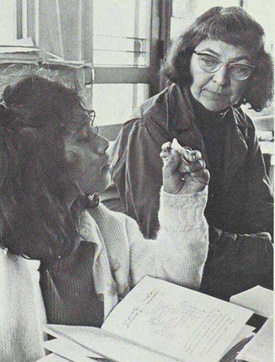
Woesha Cloud North was an American artist, teacher, and activist. She taught in the Palo Alto Public schools from 1961 to 1969 and then assisted in running the school during the Occupation of Alcatraz. From the early 1970s, she began to teach at the university level, teaching art at San Francisco State College, the University of Nebraska–Lincoln, and California State University, Fresno. Throughout her life, she was active in women's organizations and organizations focused on indigenous people. Posthumously, her service was honored with an induction into Stanford's Multicultural Alumni Hall of Fame in 1995.
References
- 1 2 3 4 5 6 7 "Robert Warrior". Department of American Studies. University of Kansas. 20 July 2016. Retrieved 14 December 2018.
- ↑ Pulitano, Elvira (2003). Toward a Native American Critical Theory (1st ed.). Nebraska University Press. p. 60. ISBN 9780803237377.
- ↑ "2016-2017 President Robert Warrior | ASA".
- 1 2 Rahm-Barnett, Shay, ed. (Fall 2011). "Robert Allen Warrior". New Plains Review. Edmond, OK. 12 (1): 68. ISBN 9780983735700 . Retrieved 14 December 2018.
- 1 2 3 "2016-2017 President Robert Warrior". American Studies Association. Retrieved 14 December 2018.
- ↑ Duty, Shannon Shaw (17 May 2018). "Dr. Robert Warrior named to the American Academy of Arts and Sciences". Osage News. Retrieved 14 December 2018.